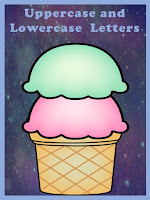Early Childhood Literacy
The New England Primer was the first textbook that was used to teach children to read in the American Colonies. The reading instruction included teaching the alphabet, consonants, and vowels.
Now let’s skip ahead and look at more recent times. In 2002, The National Early Literacy Panel was created to look at the scientific research conducted on the early literacy skills in children ages 0-5.
A key finding was made that strong “reading and writing skills that are developed in the years from birth to age 5 have a clear and consistently strong relationship with later conventional literacy skills.”
Factors That Strengthen Later Literacy
The NELP concluded that there are 7 factors that strengthen later
literacy regardless of certain conditions such as IQ or SES.
• alphabet knowledge
• rapid automatic naming (RAN) of letters or digits
• RAN of objects or
colors
• writing or writing name
If you are interested in reading the results of this study go to:
DEVELOPING EARLY LITERACY: REPORT OF THE NATIONAL EARLY LITERACY PANEL
· I’ll begin by addressing alphabet knowledge.
Alphabet Knowledge
Alphabet Knowledge is the knowledge of individual letters, sounds, and letter shapes. It is:
· Knowing each letter in conventional print has an uppercase and lowercase.
Letter recognition and discrimination
· knowing letter
names
· knowing letter
shapes
· knowing
letter sounds
· knowing
that letters and sounds form written words
We can definitely see how essential these skills are to the early part of learning to read.
These are skills that are taught in PreKinder and in Kindergarten. PreKinder is not a required grade level so not every child attends. Kindergarten is not a full day in every district so some children have limited exposure to these skills.
So, when these little ones come to us in PreK, in Kindergarten, and even in first grade we don't know how much of this they have had. This creates an urgent need to provide direct instruction and to give many varied opportunities to master these literacy skills.
This packet is a way you can help your students become masters of letter formation, letter recognition of uppercase and lowercase letters, and make the connections between letters and sounds. They will get to practice letter formation by tracing letters. They will match the beginning sound of a picture to either lowercase letters or uppercase letters. This resource uses an approach that is appealing to students of building ice cream cones with scoops of letters and pictures.
  |
 |
| Uppercase Mat |
 Letter Match for lowercase-uppercase letters; lowercase-picture, uppercase-picture; lowercase-uppercase-picture match.
Letter Match for lowercase-uppercase letters; lowercase-picture, uppercase-picture; lowercase-uppercase-picture match.














No comments:
Post a Comment